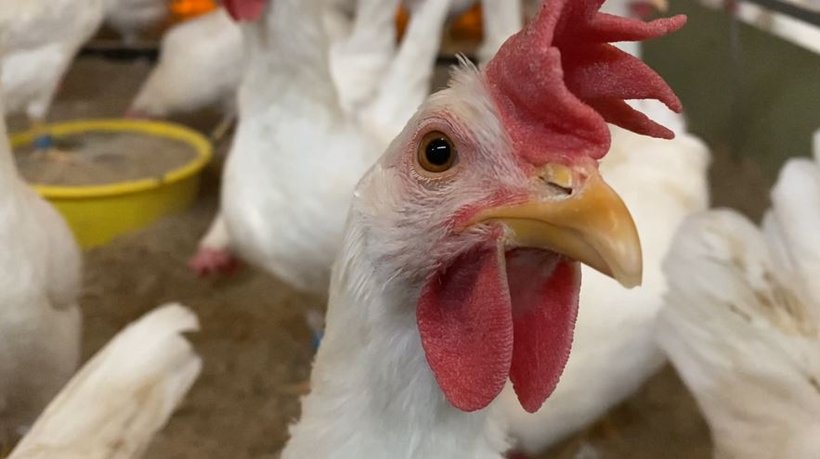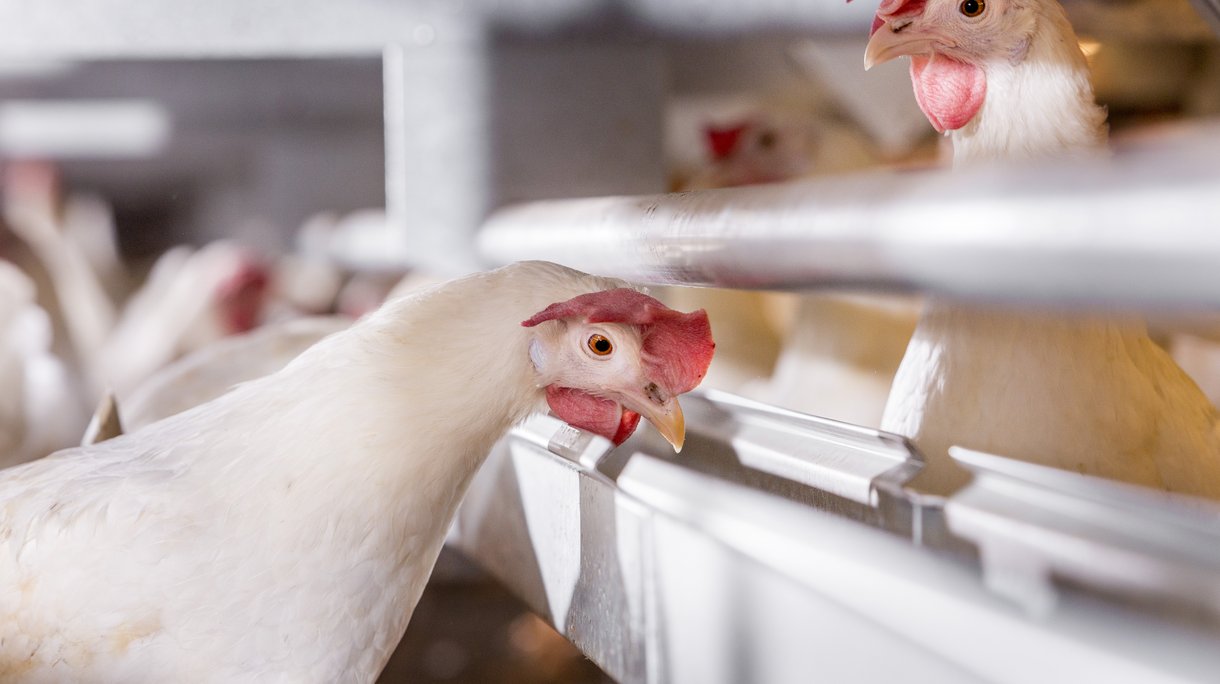
Published on May 11, 2023
HenTrack, using individual movement and location patterns to bring genetic selection for cage-free laying hens to the next level
Public attention to the welfare of laying hens over the previous decades/years in Europe/USA has been fostering a transition away from conventional cage housing systems. This has resulted in the shift from cages to cage-free housing systems. In Northern and Western Europe, already the vast majority of laying hens is kept in cage-free housing systems, and it is expected that the share of cage-free eggs will increase over 50% in the United States by 2026.
The cage-free housing systems provide the laying hens with more space, allowing more movements and greater expression of the hen’s natural behavior. Nonetheless, behavioral and health problems are also encountered in cage-free housing systems. It is known that dust levels are much greater in cage-free housing systems, this also account for ammonia levels as there is no full removal of manure. For birds that have access to a range, there is the increased risk of endoparasites and predation. Also, the risk for an infection with highly pathogenic avian influenza is greater in free-range housing systems. Preventing the birds from making use of the range during the wild bird migration season has proven to be an effective tool. Feather pecking, cannibalistic behavior and smothering are among others, factors that can result in increased mortality in cage-free housing systems.
To better understand the behavior of laying hens we have started several years ago HenTrack 1.0, a research collaboration with Dr. Michael Toscano and his team at the Center for Proper Housing of Poultry and Rabbits (ZTHZ) in Zollikofen, Switzerland. The ZTHZ is a joint research center of the Federal Food Safety and Veterinary Office (FSVO) and the Veterinary Public Health Institute (VPHI) of the University of Bern. By combining state of the art sensor technology, analysis, and selective breeding within an academic and industry partnership that utilizes large group sizes, we have advanced the fundamentals of genetic evaluation for a new world of cage-free systems.
The HenTrack 1.0 project focused on the Dekalb White, our most common White Leghorn breed in cage-free housing systems. The overall process involved simultaneous assessments by the ZTHZ and Hendrix Genetics in large and small groups, respectively. Individual assessments of animals allowed us to select pure line genetics of sires and dams based on welfare, health, and productivity. Unified assessments in cage-free conditions alongside information from Hendrix Genetics global Field-Tests sites gave us the full picture and a robust balance of welfare, health, and economic traits. Also, a special word of thanks to the team of Prof. Baes at the University of Guelph for digging deeper in the genomic analyses.
We are extremely pleased to announce that a follow up project, Hentrack 2.0, will be supported by Open Philanthropy, a foundation based in California, USA. The funding of $2.7 million will be used to promote cage-free housing for laying hens and improve their welfare and health through new breeding approaches. Open Philanthropy supports initiatives to improve animal welfare with a focus on projects likely to cause large global changes and has a particular interest in promoting the transition away from cage housing systems for laying hens. The HenTrack project by Dr. Michael Toscano and the leading suppliers of laying hen genetics, Hendrix Genetics in the Netherlands, and Lohmann breeders in Germany, aims to do just that: it uses the latest findings from behavioral research on hens kept in cage-free housing with and without outdoor areas to incorporate them into breeding programs for laying hens.
In HenTrack 2.0, the behavior, health and welfare of Laying hens will be monitored during the laying period and evaluated using metrics of movement and location patterns developed within the ZTHZ. Given the remarkable consistency of the behavioral patterns within hens over time and their association with health and welfare, the ability to remotely monitor hen behavior will allow assessment of relevant traits without disturbing the hens, a major advantage over current breeding programs. While a novel development that takes advantage of the latest sensor technology and 'big data' analysis, our tracking methodology also allows data to be collected from individual hens in large groups in a manner not possible in cage systems.
The HenTrack 2.0 project will begin in 2023, last five years, and include four of the world's most common high-performance hybrids, which lay particularly high numbers of eggs. "In the project, we want to find out which traits relate to the welfare and health of the laying hens in order to breed more robust and resistant chickens for cage-free housing while maintaining high performance" Toscano says.
Teun van de Braak, manager customer service and technical support at Hendrix Genetics and project member of HenTrack adds: "It is always a great pleasure to work with Dr. Toscano and his team, during the past decade we have established a close research collaboration with Dr. Toscano. The research done in Switzerland allows us to learn more on chicken behavior and how to integrate the new traits related to hen welfare in our day-to-day breeding programs. The previous research project, HenTrack 1.0 and the preliminary studies done before gave us confidence to continue the research collaboration and support HenTrack 2.0".
State-of-the-art tracking methods
ZTHZ focuses on behavioral research to develop a better understanding of poultry welfare, using novel tracking methods. These include a measurement system using radio frequency and mini-receivers worn on the chickens' legs. This allows assessment of relevant traits without disturbing the hens, a major advantage over current breeding programs. With the help of such tracking methods, it has been possible to show consistent behavioral patterns of the laying hens, such as how they use the indoor and outdoor areas of the barn. These methods will also be used in HenTrack. Since the environment in the Aviforum corresponds to a real commercial large-scale barn, the data collected is very practical, which makes it attractive for breeding companies.
Discover more




